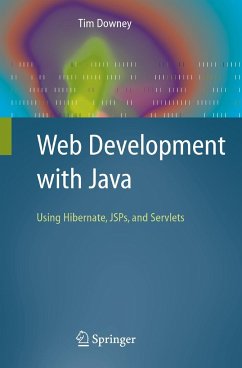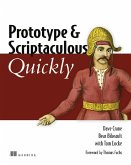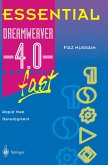This book jumps to the "good stuff" from the outset, allowing students to quickly start writing real applications. It introduces readers to a 3-tiered, Model-View-Controller architecture by using Hibernate, JSPs, and Java Servlets. This book uses existing powerful technologies such as JSP, JavaBeans, Annotations, JSTL, Java 1.5, Hibernate, Apache Velocity and Tomcat. It also presents Model 1 architectures using Servlets and JSP as alternatives to Perl and PHP. Written for novice developers, this book provides an introductory course in web development for undergraduates as well as web developers.
From the reviews:
"Downey summarizes ... clearly and succinctly, the focus of the book: Java servlets that use JavaServer Pages (JSP) and connect to a MySQL database using the Hibernate framework. The book covers precisely what the title says. ... At the end of the book, there is a one-page glossary of terms; a one-page list of additional resources, books, and Web sites; and a detailed eight-page index ... . In conclusion, I strongly recommend this book to readers who are interested in developing component-based systems ... ." (M. M. Tanik, Computing Reviews, December, 2008)
"Downey summarizes ... clearly and succinctly, the focus of the book: Java servlets that use JavaServer Pages (JSP) and connect to a MySQL database using the Hibernate framework. The book covers precisely what the title says. ... At the end of the book, there is a one-page glossary of terms; a one-page list of additional resources, books, and Web sites; and a detailed eight-page index ... . In conclusion, I strongly recommend this book to readers who are interested in developing component-based systems ... ." (M. M. Tanik, Computing Reviews, December, 2008)








